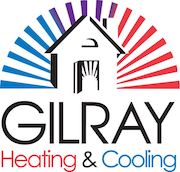Everyone’s always looking to save money on their utility bills, but you should know there’s a way to keep costs down, even when you’re out of the house.
The secret is your thermostat. By learning more about its special features and settings, you can tailor the temperature to your needs. This means establishing various temperature settings for when you’re home, away or even when you’re asleep.
With a few simple adjustments, you have more time to enjoy pleasant temperatures while cutting down your energy bills. Here are some ways your thermostat can save you money in the summer:
While at Home
When you’re home, you want a nice range of pleasant temperatures. That’s why it’s best to set your thermostat lower in the summer while inside to appreciate the cool air.
But in terms of energy efficiency, the best range for the summer is actually around 78 and 80 degrees Fahrenheit. With this adjustment, you’ll avoid the worst of summer while still lowering your monthly energy bill.
While Away
When setting the temperature for a vacation or other trip away from the house, the majority of homeowners will set the thermostat higher for while they’re gone.
Depending on the local climate or your home’s location, you can set the thermostat to higher temperatures like 88 degrees while no one is home before lowering it back to the sweet spot of 78-80 degrees when you or a family member return. This way, your air conditioning won’t have to work constantly to provide cooling for a bunch of empty rooms.
While Asleep
To enjoy a good night’s sleep during the summer, you want your thermostat set at a comfortable temperature. A great place to start is between 68-72 degrees Fahrenheit. You won’t have to worry about getting too hot or too cold at some point overnight.
Other Strategies for Lowering Energy Use:
- Install a smart thermostat: Trying a smart thermostat in the summer helps save money on energy costs since it can plan your temperature adjustments according to your lifestyle and home environment. They can lower the temperature while you are home or sleeping, while allowing it to get a little warmer when no one is home. With models like the Lennox iComfort, you can adjust the temperature remotely through your smartphone, tablet or laptop. Scheduling smart thermostat installation in your Wausau home can be the simplest strategy for maintaining comfortable, yet energy-efficient temperatures no matter where you are.
- Update your existing HVAC system: A new HVAC system saves money right from the start. With greater energy efficiency, lower utility bills won’t be far behind since it requires less energy to reach your preferred temperatures. Air conditioning installation in Wausau is only a phone call away, so don’t hesitate to reach out to local pros like Gilray Heating and Cooling who can set you up for success.
- Keep up with AC maintenance: Investing in or ignoring regular air conditioning maintenance in Wausau can have a significant impact on your utility bills. If you stay on top of cleaning key components like the coils, checking for damage and keeping vents clear of dust and debris, this can help your HVAC system run more efficiently. More efficient operation reduces strain on important or delicate components and lowers operational costs, leading to lower energy usage, which translates into lower energy bills.
- Clean or replace the air filter on a regular basis: Regularly changing the air filters in your HVAC system saves money by helping air flow efficiently through your air conditioner. When filters are old and less effective, air conditioners have to work harder, and this greater strain could shorten the system’s life span and result in breakdowns.
- Check if you have enough insulation in the attic: Insulation is a vital part of maintaining an energy-efficient home, securing the hot air outside and the cool air inside over the summer. The North American Insulation Manufacturers Association (NAIMA) recommends that homes in the southern United States should possess at least 13-14 inches of insulation, while those in northern U.S. states should have 16-18 inches.
- Check your ventilation: Damage to the ventilation is capable of increasing your energy bills much more than 20 percent, plus it can potentially allow harmful emissions from your water heater, clothes dryer and other appliances to get into the atmosphere of your home. Finding any leaks fast and sealing them can fix both of those problems.
- Seal all other leaky spots in your home: Sealing up other leaks in your home with caulk, foam sealant or weather-stripping can help keep it cooler on hot summer days. Don’t forget to check for any gaps around windows, doors and even outdoor fixtures. Devoting time and effort to sealing leaks now can help you save a lot over time.
